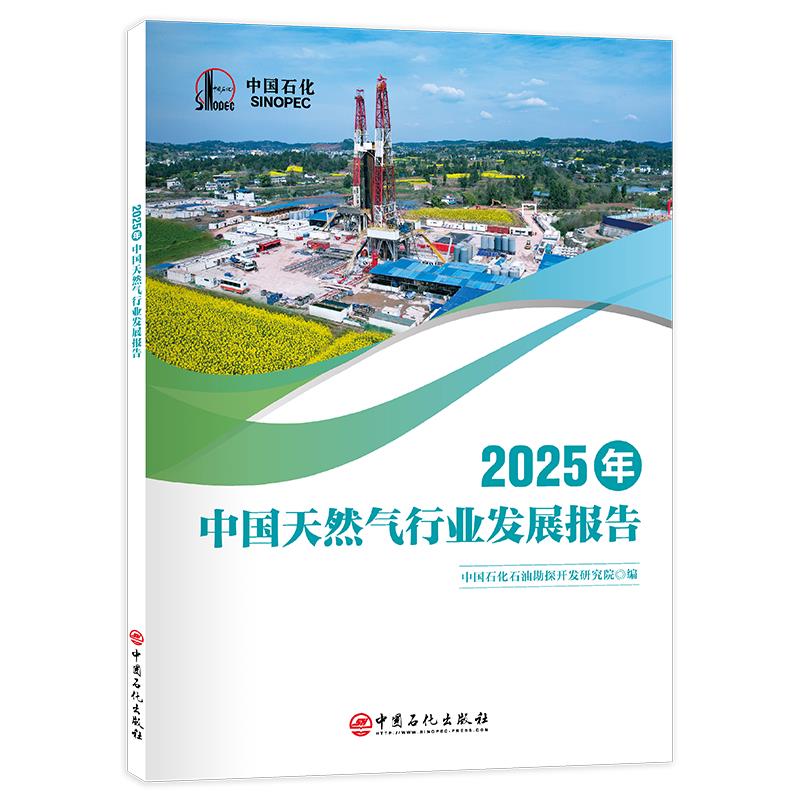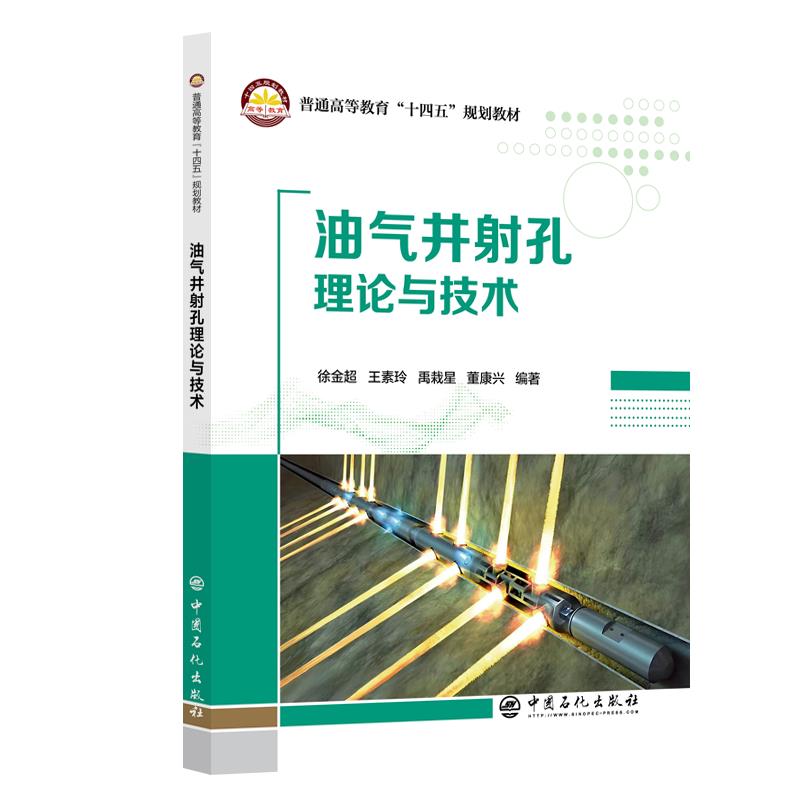暂无商品咨询信息 [发表商品咨询]


本书针对我国典型煤矿深部开采条件,以中、西部典型井田为样区,以系统论为指导,秉承煤炭安全绿色开采理念,初步探究了深部绿色开采相关理论问题(如深部界定、安全绿色、绿色开采评价)和深部开采强扰动作用下煤岩体多尺度多因素协同作用机理与过程,揭示了地下水系统结构与失水模式、瓦斯对体的“蚀损”作用、巷道非对称破坏、采场动力响应等煤炭开采环境损伤与灾害诱发机制,提出了深部高强度开采时低渗透性煤层增渗、巷道围岩非对称破坏控制、采场围岩稳定性控制、“仿生”开采等关键技术,初步构建了深部安全绿色开采的“高保低损”模式和技术体系,基于中部焦作矿区和西部宁东矿区建立了两个示范点,初步形成具有深部特色的煤炭安全绿色开采理论与方法,为我国深部煤炭安全和低生态损害开采提供了理论依据与技术支撑。
目录
前言
章深部煤炭开采理论与技术研究进展1
1.1我国深部煤炭开采及开采面临的主要问题1
1.1.1我国深部煤炭开采特点1
1.1.2深部煤炭开采面临的主要问题4
1.2深部煤炭开采理论与技术研究进展5
1.2.1深部开采煤岩基础理论研究6
1.2.2深部煤炭开采技术研究22
1.3深部煤炭现代开采面临的科学与技术问题及解决途径28
1.3.1深部煤炭开采面临的科学与技术难题28
1.3.2解决问题的思路与方法31
第2章深部煤炭开采界定与安全绿色开采模式研究35
2.1深部煤炭开采界定及影响因素分析35
2.1.1前人对深部开采的界定35
2.1.2深部开采定义及内涵40
2.1.3深部界定方法与判断准则43
2.1.4影响“深部”主要参数分析47
2.2深部煤炭安全绿色开采理念与基本特征57
2.2.1煤炭现代开采理念演化58
2.2.2深部安全绿色开采定义及内涵63
2.2.3深部安全绿色开采基本特征67
2.3深部煤炭“高保低损”开采模式研究69
2.3.1煤炭开采生态损伤及绿色响应分析70
2.3.2深部“高保低损”开采模式构建77
2.3.3深部“高保低损”型安全绿色开采技术体系与关键技术82
第3章深部采动煤岩体多尺度破坏机理及演化规律88
3.1深部采动煤岩体复杂裂隙网络表征与力学特性多尺度效应88
3.1.1核磁共振冻融技术测量煤孔径分布89
3.1.2基于CT扫描与三维重建的煤样破裂过程数值分析方法92
3.1.3深部岩石力学特性的实验室尺度效应95
3.1.4深部岩体力学特性的工程尺度效应96
3.2开采扰动下煤岩破裂、失稳的能量机制与判别准则98
3.2.1基于弹性能密度的煤岩体本构模型98
3.2.2煤岩动态断裂与能量耗散的水理效应107
3.2.3煤岩动态断裂与能量耗散的层理效应111
3.3煤岩失稳的率响应机制和触发条件114
3.3.1煤岩失稳的大跨度率响应机制115
3.3.2煤岩失稳的小跨度率响应机制116
3.3.3煤岩失稳的单轴抗压强度触发条件117
3.3.4煤岩失稳的冲击能量指数触发条件118
3.3.5不同冲击速率下煤岩破坏机制118
3.4煤岩体失稳破坏多因素协同作用力学模型和损伤驱动机制121
3.4.1单轴循环载荷扰动下煤的损伤演化过程121
3.4.2不同加卸载应力路径煤岩损伤驱动机制134
3.4.3不同含水率煤岩损伤驱动机制137
第4章深部采动巷道围岩破坏机理与控制关键技术141
4.1不同埋深下非均匀采动应力场演化规律141
4.1.1一次采动留巷轴向围岩应力场分布规律142
4.1.2一次采动采空区侧向围岩应力场分布规律144
4.1.3二次采动巷道超前应力场分布规律研究147
4.2深部采动巷道围岩破坏形态与扩展效应148
4.2.1双向非等压应力条件下巷道塑性区理论148
4.2.2一次采动影响下留巷塑性区形态特征151
4.2.3二次采动影响下巷道超前塑性区形态特征153
4.2.4巷道断面形状对围岩塑性区形态的影响155
4.3深部采动巷道围岩破坏主要控制因素及响应特征156
4.3.1采动巷道围岩应力型非对称破坏的基本性质156
4.3.2采动巷道围岩应力型非对称破坏的影响因素160
4.4深部采动巷道围岩破坏控制原理162
4.4.1采动应力与围岩破坏形态关系163
4.4.2采动巷道围岩变形与非对称破坏形态的关系164
4.4.3窄煤柱采动巷道非均匀变形破坏机理166
4.4.4采动巷道围岩破坏形态与稳定性内在联系168
4.5深部采动巷道围岩破坏安全控制关键技术171
4.5.1深部采动巷道围岩安全工程调控方法171
4.5.2深部采动巷道围岩稳定性控制关键技术178
第5章深部高强度开采扰动采场围岩失稳机理与控制185
5.1深井采场覆岩与宏观力学结构特征及演化规律185
5.1.1深部采场覆岩结构影响因素及宏观力学结构特征185
5.1.2深部开采采动应力分布及演化规律189
5.1.3覆岩结构与采动应力演化关系研究193
5.2深部高强度开采扰动下围岩失稳及控制机理204
5.2.1采场围岩动静载失稳机理204
5.2.2采场围岩损伤演化过程209
5.2.3深部开采顶板断裂特征分析213
5.2.4采场围岩失稳控制主要指标216
5.3深部采场围岩控制技术219
5.3.1围岩稳定性监测预警技术220
5.3.2近场覆岩定向水压致裂控顶技术222
5.3.3远场深孔爆破大范围卸压技术226
第6章深部含瓦斯煤力学-渗流响应与增渗关键技术230
6.1煤体孔隙结构特征230
6.2深部煤体结构的瓦斯响应规律与煤体弱化机制231
6.2.1瓦斯压力卸放煤体变形实验研究232
6.2.2瓦斯气体对深部煤体的蚀损及强度弱化机制235
6.3深部含瓦斯煤体的基本力学特性和本构关系245
6.3.1常规三轴加载深部含瓦斯煤力学特性245
6.3.2卸围压条件下深部含瓦斯煤力学特性247
6.3.3复合加卸载条件下深部含瓦斯煤力学特性250
6.3.4深部含水-瓦斯煤体的力学特性与本构关系252
6.4深部采动含瓦斯煤变形破裂过程的瓦斯渗流规律256
6.4.1煤渗透率各向异性特征试验研究256
6.4.2常规三轴加载深部含瓦斯煤渗流规律258
6.4.3复合加卸载对深部含瓦斯煤渗流规律262
6.5深部开采瓦斯低透煤层增渗关键技术267
6.5.1深部开采低透气性煤层增渗控制参数267
6.5.2低透气性煤层增渗关键技术方法应用269
第7章深部开采地下水系统损伤规律与保护关键技术280
7.1深部开采地下水系统损伤机理与变化规律280
7.1.1深部开采水文地质结构特征280
7.1.2深部开采地下水系统损伤机理282
7.1.3深部开采地下水系统的失水模式285
7.1.4典型矿井深部煤层开采地下水失水规律287
7.2深部开采对地下水系统的影响规律289
7.2.1地下水系统模型290
7.2.2深部开采对地下水流场影响291
7.2.3深部开采对地下水系统均衡影响295
7.2.4深部开采对地下水影响评价295
7.3深部开采地下水系统保护关键技术296
7.3.1深部开采地下水系统保护原理296
7.3.2仿生开采工艺模拟研究298
7.3.3仿生开采技术体系与关键技术304
7.4仿生开采技术模拟试验研究307
7.4.1相似物理模拟试验平台设计307
7.4.2相似物理试验模型设计307
7.4.3仿生开采相似模拟试验结果分析308
第8章中东部焦作矿区赵固井田高保低损开采研究329
8.1研究区概述329
8.1.1区域位置329
8.1.2水文地质条件329
8.1.3矿区地应力特征330
8.1.4开采技术条件331
8.2深部开采围岩特性及灾害特征332
8.2.1二1煤层围岩岩石力学测试332
8.2.2采动煤层瓦斯特性及灾害特征333
8.2.3深部采动巷道非均匀变形破坏特征335
8.2.4深部采场围岩动力灾害特征338
8.3深部高保低损开采模式及控制关键技术339
8.3.1深部高保低损开采围岩损伤破坏模式339
8.3.2深部高保低损开采围岩控制关键技术347
8.4深部安全绿色开采效果354
8.4.1深部巷道柔性支护效果354
8.4.2深部底抽巷支护效果361
8.4.3基于地质雷达探测的深部采动底板损伤控制效果分析367
8.4.4基于微震监测的深部采动底板损伤控制效果分析369
第9章宁东矿区麦垛山煤矿“高保低损”开采研究374
9.1研究区概况374
9.1.1矿区地质与构造375
9.1.2矿区水文地质377
9.1.3区域生态概况381
9.1.4开采工艺概况382
9.2麦垛山地下水系统研究382
9.2.1主要含水层水文地质特征383
9.2.2地下水补、径、排关系387
9.3深部仿生开采地下水保护情景模拟效果分析393
9.3.1深部开采地下水系统数学模型394
9.3.2深部开采扰动时地下水变化预测分析405
9.3.3深部仿生开采控制时保水效果模拟分析406
9.3.4深部仿生开采地下水系统保护效果比较分析409
参考文献410
Contents
Preface
1 Research progress on the theory and technology of deep coal mining 1
1.1 Deep coal mining and main problems in China 1
1.1.1 Characteristics of deep coal mining in China 1
1.1.2 Main problems faced by deep coal mining 4
1.2 Research progress on the theory and technology of deep coal mining 5
1.2.1 Basic theoretical research on coal-rock in deep mining 6
1.2.2 Research on deep coal mining technology 22
1.3 Scientific and technical problems faced by deep coal mining and solutions 28
1.3.1 Scientific and technical problems faced by deep coal mining 28
1.3.2 Ideas and methods to solve problems 31
2 Definition of deep coal mining and safe & green mining mode 35
2.1 “Deep” definition and influencing factors to coal mining 35
2.1.1 Predecessors’ definition of deep coal mining 35
2.1.2 “Deep” definition and connotation of coal mining 40
2.1.3 “Deep” definition methods and judgment criteria 43
2.1.4 Main influencing factors 47
2.2 Concept and basic characteristics of safe & green coal mining 57
2.2.1 Concept evolution of modern coal mining 58
2.2.2 Definition and connotation of deep “safe & green mining” 63
2.2.3 Basic characteristics of deep “safe & green mining” 67
2.3 HP&LD mode in deep coal mining 69
2.3.1 Analysis of ecological damage and green response of coal mining 70
2.3.2 Construction of HP&LD mode in deep mining 77
2.3.3 Technology system and key technologies of HP&LD mode 82
3 Multi-scale studies on failure mechanism and evolution of coal-rock mass in deep mining 88
3.1 Characterization of complex fracture network and multi-scale response of mechanical properties of coal-rock mass in deep mining 88
3.1.1 Distribution of pore size based on nuclear magnetic resonance freeze-thaw data 89
3.1.2 Analysis of coal sample fracturing process based on 3D reconstruction of CT data 92
3.1.3 Large sample analysis of mechanical properties of deep rocks 95
3.1.4 Engineering scale effect of mechanical properties of deep rock mass 96
3.2 Energy mechanism and instability criteria of coal-rock mass under mining disturbance 98
3.2.1 Constitutive model of coal-rock mass based on elastic energy density 98
3.2.2 Hydraulic effect of dynamic fracture and energy dissipation of coal-rock mass 107
3.2.3 Stratification effect of dynamic fracturel and energy dissipation of coal-rock mass 111
3.3 Rate response mechanism and trigger conditions of coal-rock mass instability 114
3.3.1 Large-span rate response mechanism of coal-rock mass instability 115
3.3.2 Small-span rate response mechanism of coal-rock mass instability 116
3.3.3 Trigger condition of uniaxial compressive strength of coal-rock instability 117
3.3.4 Trigger condition of impact energy index of coal-rock mass instability 118
3.3.5 Failure mechanism of coal-rock mass under different impact rates 118
3.4 Multi-factor synergistic mechanical model and damage-driven mechanism of coal-rock instability and destruction 121
3.4.1 The evolution process of coal damage under uniaxial cyclic load disturbance 121
3.4.2 Coal-rock damage-driven mechanism under different loading and unloading stress paths 134
3.4.3 Damage-driven mechanism of coal-rock with different water content 137
4 Failure mechanism and key controlling technology of roadway ’s surrounding rock in deep mining 141
4.1 Evolution of non-uniform mining stress field under different depths 141
4.1.1 Distribution of axial stress field in surrounding rock of primary mining roadway 142
4.1.2 Distribution of lateral stress field in surrounding rock of goaf under once mining 144
4.1.3 Distribution of leading stress field in the roadway under secondary mining 147
4.2 Failure form and expansion effect in surrounding rock of roadway 148
4.2.1 Plastic zone theory of roadway under bidirectional non-isopressure stress 148
4.2.2 Morphological characteristics of plastic zone in roadway retained under the influence ofprimary mining 151
4.2.3 Morphological characteristics of leading plastic zone of roadway influenced by the secondarymining 153
4.2.4 Cross-section shape influence on plastic zone morphology of surrounding rock 155
4.3 Main controlling factors and response features of roadway’s surrounding rock failure 156
4.3.1 Basic properties of stress-type asymmetric failure of surrounding rock in mining roadway 156
4.3.2 Influencing factors of stress-type asymmetric failure of surrounding rock in mining roadway 160
4.4 Failure control principle of roadway’s surrounding rock in deep mining 162
4.4.1 Relation between mining stress and failure form of surrounding rock 163
4.4.2 Relationship between surrounding rock deformation and asymmetric failure form in miningroadway 164
4.4.3 Non-uniform deformation and failure mechanism of mining roadway with narrow coal pillars 166
4.4.4 Intrinsic relationship between surrounding rock failure form and stability in mining roadway 168
4.5 Key technology for safety control of roadway’s surrounding rock destruction indeep mining 171
4.5.1 Safety engineering regulation and control method of surrounding rock in deep miningroadway 171
4.5.2 Key technology for stability control of surrounding rock in deep mining roadway 178
5 Surrounding-rock instability mechanisms of deep stopes with high-intensity mining and its controlling methods 185
5.1 Macro-mechanics structural characteristics and evolution of overburden rock in deep stopes 185
5.1.1 Influencing factors and macro-mechanical structural characteristics of overburden rock in deep stopes 185
5.1.2 Distribution and evolution of stress in deep mining 189
5.1.3 Relationship between overlying rock structure and mining stress evolution 193
5.2 Instability and controlling mechanism of surrounding rock of deep stopes underhigh-intensity mining disturbance 204
5.2.1 Instability mechanism of surrounding rock of stopes under dynamic and static load 204
5.2.2 Damage evolution process of surrounding rock of stopes 209
5.2.3 Features analysis of roof fracture in deep mining 213
5.2.4 Main indicators of instability control of surrounding rock of stopes 216
5.3 Controlling technology for surrounding rock of deep stopes 219
5.3.1 Stability monitoring and early warning technology of surrounding rock 220
5.3.2 Directional hydraulic fracturing technology for near-field overburden control 222
5.3.3 Large-scale pressure relief technology using deep hole-blasting for far-field overburden control 226
6 Mechanics-seepage response and technologies for increasing permeability of deep gas-bearing coal 230
6.1 Characteristics of coal pore-structure 230
6.2 Gas response and strength weakening mechanism of coal structure in deep coal 231
6.2.1 Experimental study on coal pressure deformation due to gas pressure discharge 232
6.2.2 The corrosion and strength weakening mechanism of gasin deep coal 235
6.3 Basic mechanical properties and constitutive relationship of deep gas-bearing coal 245
6.3.1 Mechanical characteristics of deep gas-bearing coal under conventional triaxial loading 245
6.3.2 Mechanical characteristics of deep gas-bearing coal under unloading confining pressure 247
6.3.3 Mechanical characteristics of deep gas-bearing coal under combined loading and unloading conditions 250
6.3.4 Mechanical characteristics and constitutive relationship of deep water-bearing coal 252
6.4 Gas seepage in the process of deformation and fracture of gas-bearing coal in deep mining 256
6.4.1 Experimental study on anisotropy characteristics of coal permeability 256
6.4.2 The gas seepage of deep gas-bearing coal under conventional triaxial loading conditions 258
6.4.3 The gas seepage of deep gas-bearing coal under combined loading and unloading conditions 262
6.5 Key technologies for increasing permeability of coal seams with low permeabilityin deep mining 267
6.5.1 Control parameters for increasing permeability of coal seams with low permeability in deepmining 267
6.5.2 Application of key technologies for increasing permeability of coal seams with low permeabilityin deep mining 269
7 Damage mechanism and protecting technology for groundwater preservation in deep mining 280
7.1 Damage mechanism and change of groundwater system in deep mining 280
7.1.1 Hydrogeological structure characteristics in deep mining 280
7.1.2 Damage mechanism of groundwater system in deep mining 282
7.1.3 “Water loss” patterns of groundwater system in deep mining 285
7.1.4 Groundwater loss regularity of typical deep mines 287
7.2 Influence of deep mining on groundwater system 289
7.2.1 Groundwater system model 290
7.2.2 The deep mining influence on the groundwater flow field 291
7.2.3 The deep mining influence on the balance of groundwater system 295
7.2.4 Evaluation of the deep mining influence on groundwater 295
7.3 The key technology to preserve the groundwater system in deep mining 296
7.3.1 The conservation principle of groundwater system in deep mining 296
7.3.2 Simulation research on bionic-mining technology 298
7.3.3 Bionic-mining technology system and key technologies 304
7.4 Effect analysis based on bionic-mining simulation test 307
7.4.1 Platform design of similar physical simulation test 307
7.4.2 Model design of similar physical simulation test 307
7.4.3 Results analysis of similar simulation test of bionic-mining 308
8 HP&LD mining in Zhaogu Mine of Jiaozuo mining area 329
8.1 Overview of the study area 329
8.1.1 Regional location 329
8.1.2 Hydrogeological conditions 329
8.1.3 Ground stress characteristics of mining area 330
8.1.4 Applied mining technology 331
8.2 Characteristics of surrounding rock and disaster in deep mining 332
8.2.1 Rock mechanics characteristics of coal seam 21 332
8.2.2 Gas and disaster characteristics of mining coal seam 333
8.2.3 Non-uniform deformation and failure characteristics of deep roadways 335
8.2.4 Dynamic disaster characteristics of surrounding rock in deep stopes 338
8.3 HC&LD mining mode and key controlling technology 339
8.3.1 Damage and failure mode of surrounding rock 339
8.3.2 Key technology to control surrounding rock for HC&LD mining 347
8.4 Effect of HP&LD mining in deep mining 354
8.4.1 Damage controlling effect using flexible support in deep roadway 354
8.4.2 Damage controlling effect using bed plate tunnel 361
8.4.3 Controlling effect of floor damage based on geo-radar detection in deep mining 367
8.4.4 Controlling effect of floor damage based on microseism monitoring data 369
9 HP&LD mining in Maiduoshan Mine of Ningdong mining area 374
9.1 Overview of the study area 374
9.1.1 Geology and structure 375
9.1.2 Hydrogeology 377
9.1.3 Regional ecology overview 381
9.1.4 Mining technology overview 382
9.2 Groundwater system in Maiduoshan Mine 382
9.2.1 Hydrogeological characteristics of main aquifers 383
9.2.2 Relationship between replenishment, runoff and discharge in groundwater system 387
9.3 Simulation analysis of groundwater preservation by using bionic-mining method 393
9.3.1 Mathematical model of groundwater system in deep mining 394
9.3.2 Prediction of groundwater changes during deep mining disturbances 405
9.3.3 Preservation effect of groundwater system by using deep bionic-mining simulation 406
9.3.4 Preserving effect comparison of groundwater in different bionic-mining parameters 409
References 410
| 基本信息 | |
|---|---|
| 出版社 | 科学出版社 |
| ISBN | 9787030690623 |
| 条码 | 9787030690623 |
| 编者 | 顾大钊 等 |
| 译者 | |
| 出版年月 | 2021-07-01 00:00:00.0 |
| 开本 | 其他 |
| 装帧 | 简装 |
| 页数 | 440 |
| 字数 | 650000 |
| 版次 | 1 |
| 印次 | |
| 纸张 | |
暂无商品评论信息 [发表商品评论]
暂无商品咨询信息 [发表商品咨询]